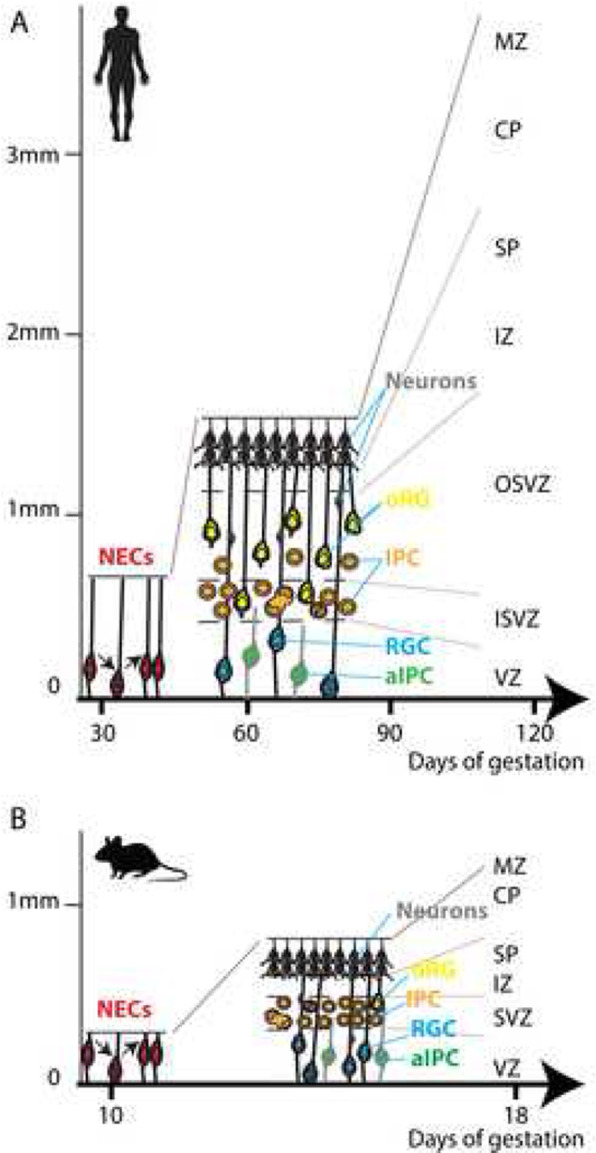Fig. 2.

Cortical expansion in humans. There are significant differences in the number, types, and behavior of cortical neural progenitors between mouse and human (see figure). In mouse, early neuroepithelial cells (NEC, colored red) divide symmetrically, to increase the size of the neuroepithelium before transforming to become radial glial progenitors (RGC, colored blue). RGCs and apical intermediate progenitor cells (aIPCs, colored green) initially self-renew but gradually begin to undergo asymmetric divisions to produce either an intermediate progenitor cell (IPC, colored orange) or a neuron (grey) [41]. Most IPCs divide only once, producing two neurons. Once the balance of radial glial divisions shifts from self-renewal toward differentiative divisions, final neuronal output becomes restricted. Newborn neurons migrate radially through the intermediate zone (IZ) and subplate (SP) before settling in the cortical plate (CP). Equivalents of each of these progenitor types are found in primates, where they show increased self-renewal which, along with an increased starting population, leads to a larger VZ and SVZ [136, 156]. Primates, including human, have two proliferative subventricular layers, the inner and outer subventricular zones (iSVZ and oSVZ respectively). The oSVZ contains a variety of highly proliferative progenitor cells including outer radial glia (oRG, colored yellow) which give rise to large numbers of cortical neurons [45, 58]. oRG are abundant in human embryonic cortex, but extremely rare in mouse. Further, neurogenesis takes place for longer in human cortex compared to mouse, allowing more rounds of cell division. Overall, the combination of higher starting cell population, additional progenitor types, higher proliferative capacity of progenitors, and longer time-window for neurogenesis have contributed to the large expansion of human cortex compared to mouse. Figure is modified, with permission, from Mason and Price (2016)
